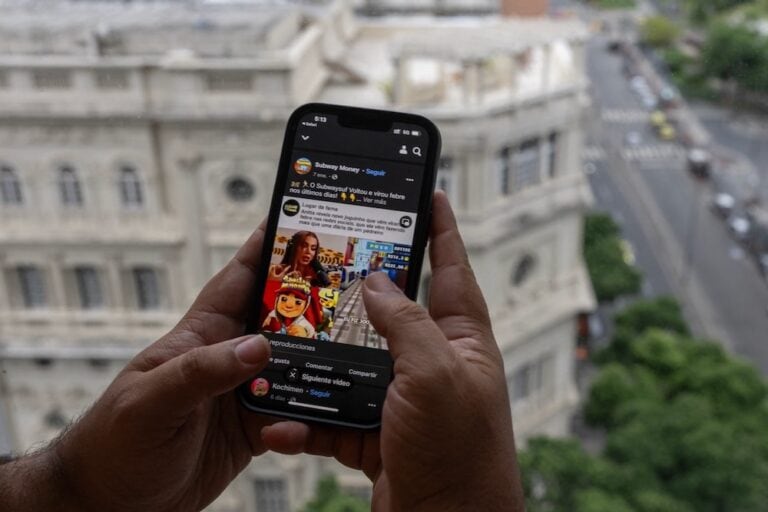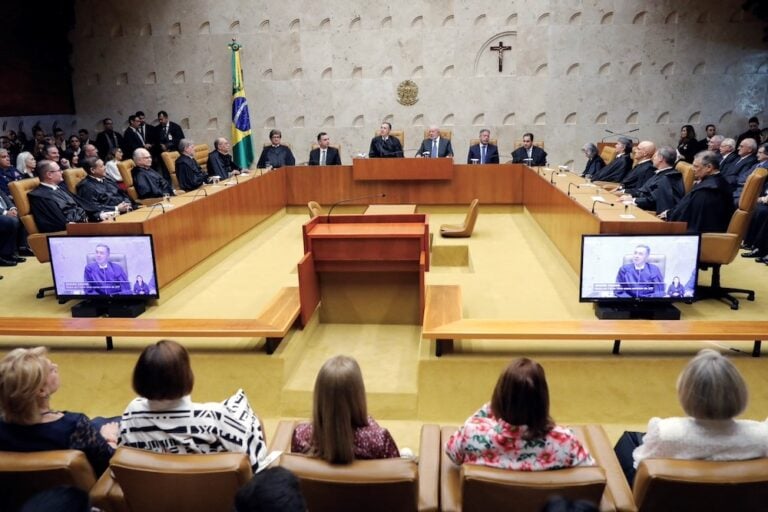Brazilian authorities must promptly investigate alleged police harassment and attacks against journalists covering protests in São Paulo, and ensure that reporters can safely cover demonstrations.
This statement was originally published on cpj.org on 10 January 2020.
Brazilian authorities must promptly investigate alleged police harassment and attacks against journalists covering protests in São Paulo, and ensure that reporters can safely cover demonstrations, the Committee to Protect Journalists said today.
On January 7, military police officers detained Rodrigo Zaim, a freelance photojournalist and founding member of the independent media group RUA, for about five hours while he was covering protests in São Paulo against an increase in bus fares, Zaim told CPJ via phone.
Also that day, police officers hit Daniel Arroyo, a reporter working for online news outlet Ponte, and around 10 other journalists with batons during a crackdown on protesters at a subway station, Arroyo told CPJ in a phone interview. He received bruises but was not hospitalized for his injuries, Arroyo said.
On January 9, as the protests continued, police officers hit Daniel Teixeira, a photographer with the Estado de São Paulo newspaper, in his ribs with a baton, and hit an unidentified photographer in the back with a stun grenade, according to a report by Ponte. CPJ was unable to find contact information for Teixeira, and could not determine the status of the unidentified photographer.
“Every year, journalists covering protests in Brazil face harassment, obstruction, and violence at the hands of police, and it seems that 2020 will be no different,” said CPJ Central and South America Program Coordinator Natalie Southwick in New York. “Brazilian authorities must ensure that police officers understand the vital role of journalists covering protests and stop treating them as active participants or targets.”
Police detained Zaim while arresting a group of about 30 protesters, the journalist told CPJ. He said that he did not have his press credential with him, and police did not let him leave with other reporters who had their press cards. Instead, officers placed him on a bus to a police station along with the protesters, Zaim said.
At the station, he was photographed and then explained his case to the chief of police, and was released without charge, Zaim said.
Arroyo told CPJ that he was documenting clashes between protesters and military police officers in a subway station when officers began hitting people with their batons. Arroyo said that he and about 10 other journalists were wearing credentials that clearly identified them as members of the press, but police officers hit them anyway.
He said he did not believe the officers actively targeted journalists, but said they did not try to avoid hitting them. He told CPJ he did not believe any of the journalists received serious injuries.
On January 9, police officers stopped and searched Arthur Stabile, a photojournalist with Ponte, and Lucas Martins, a photographer with the independent media group Jornalistas Livres, according to a report by Ponte.
The reporters were documenting police officers engaged in “stop and frisk” searches of protesters, according to that report. They were released after they were questioned by police, that report said.
The Public Security Secretary of São Paulo state issued a statement saying that police used appropriate crowd control techniques to ensure the safety of protesters and other citizens, according to Folha de São Paulo. The Public Security Secretary and the Military Police of São Paulo did not respond to CPJ’s calls requesting comment.



